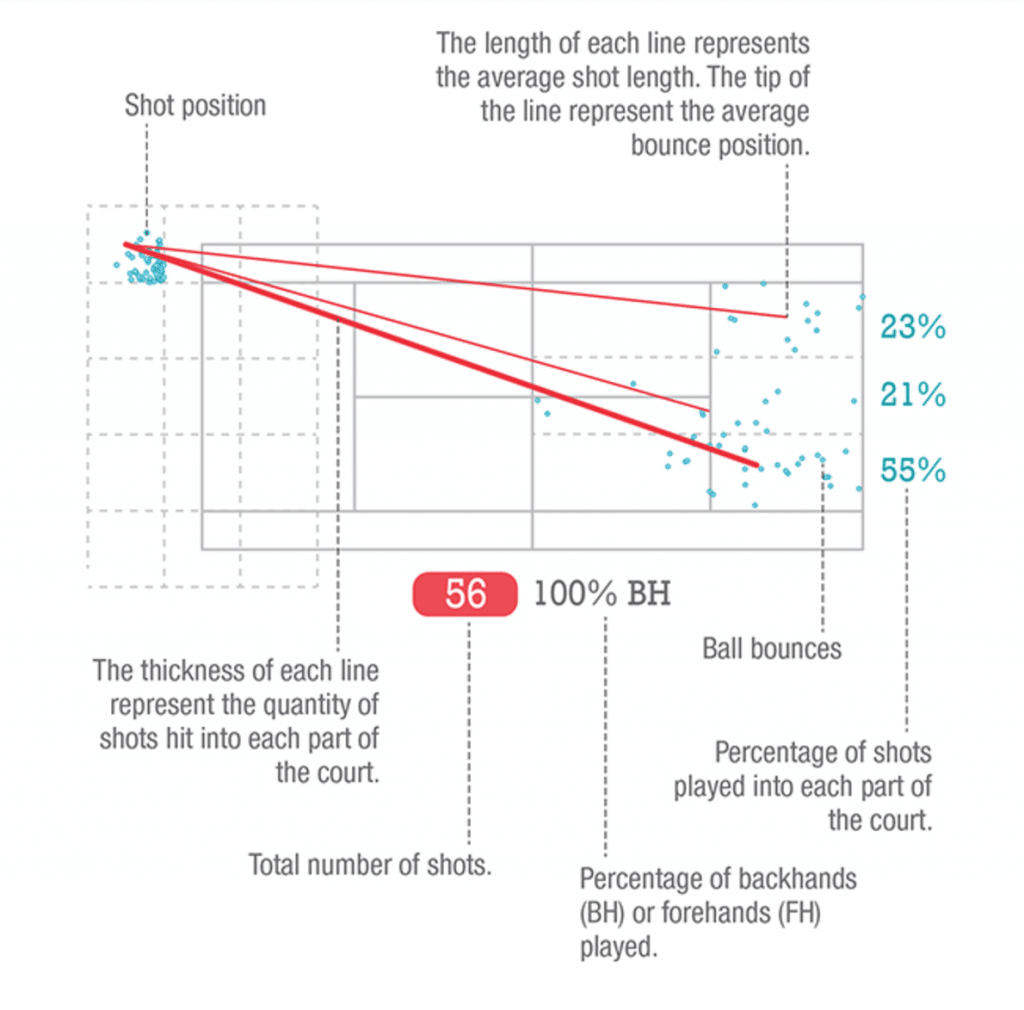By John Quartararo
Share post

John Quartararo is Managing Partner of Chestnut Ridge Partners, a Senior Consultant for Essentia Analytics, and a lifelong tennis player and fan.
If you watched the Wimbledon Men’s Final this summer, you likely saw one of several TV commercials sponsored by IBM.
The ads focused on the the role of big data collection, AI and performance analytics in elevating the sport of tennis and making Wimbledon a compelling experience for viewers around the world.
This is not a new theme from the tech world – Microsoft’s PGA Tour ads have been bringing the use of data analytics to transform the state of play in golf to life all year. IBM took it to the next level, with their emphasis on using data to deliver hidden insights into what makes the world’s top tennis players great.
Data-driven feedback loops and top-flight coaching have been the standard for best-in-class athletes since the very first “game tapes”.
Today, one would have to assume that Roger Federer, a cerebral 36 year old conqueror, utilizes the best in on-court behavior analytics to understand both his own strengths and weaknesses, as well as those of his opponent.
There’s no doubt that Federer has an exceptional gift (in tennis circles, he is known as “The GOAT” – The Greatest of All Time). However, no matter where they stand in the world rankings, Grand Slam champions are smart enough – and confident enough – to know that they have to examine, and re-examine, their patterns of play in every environment.
Advantage data
Tennis has been slower than some sports in its adoption of the sabermetric revolution popularized by Michael Lewis’ Moneyball. But in the last few years there has been an acceleration in the game’s use of data to provide new coaching points and improve player performance.
Gone are the days when coaches, looking for areas of improvement and trends in the pattern of play, would mark dots on paper to indicate where the balls were landing.
Now, ball-tracking systems like Hawk-Eye (the technology used for Wimbledon’s much-enjoyed line-call challenges) are being used to collect vast amounts of information on shot, ball, and player movement.
This data is being mined for new insights – allowing players and their coaches to understand in granular detail not only what happened, but also why. Using ‘shot charts’ (data visualizations that map shot patterns from particular areas of the court), players can now answer questions such as “Am I getting myself into a good court position?”, “Do I get the right depth on my shots?” and “Am I playing to my strengths?”.
Caption: Shot charts are an important tool in exploring a player’s behavior on court. Commonplace in sports like the NBA and Soccer, they are increasingly used as a tennis coaching tool to provide player feedback. Source: Kei Nishikori’s critical shot charts by Damien Saunder at gamesetmap.com
Use it right
At an elite level, where the performance difference between two players can be wafer thin, bringing about small changes in behavior or process can create a meaningful difference in results.
With a slight adjustment to his ball toss, Federer can take an opponent wide on the advantage side service. With a subtle shift to angle of his racquet head, his backhand slice will skid even lower off the ground on a grass surface. With a more forward position on his return of serve, a player like Federer can catch the ball on the way up and put a 130 MPH server back on his heels whilst also increasing his energy efficiency in the event of a four hour, five set match.
Access to these insights isn’t, of course, in itself a guarantee of success. When SAP, the German software giant, introduced its real-time data tennis analytics in 2015, they found that players tended to get confused if given too much feedback during a match.
The measure for a good coach, therefore, has become not only using data, but knowing how to work with the player so they can incorporate the learnings successfully and smoothly into their game.
Ball’s in your court
This new wave of data analytics is becoming a key feature of the tennis landscape, just as it has with many other sports.
In business, too, companies are realizing that they can use data-driven feedback to help humans, whether they be employees or customers, to maximize their strengths and minimize their weaknesses.
In the world of fund management, where I live, this trend is clearly taking hold. Whereas tennis players and coaches start with analyzing data about every swing of the racket and every step around the court, in fund management, it starts with analyzing every element of every investment decision.
That’s what Essentia Analytics does for the world’s top fund managers. Using a data-driven feedback loop designed specifically for the buy-side, a portfolio manager using Essentia can explore the patterns and profile of his or her own investment game.
The service includes coaches, all ex-portfolio managers, who know exactly how to help their clients incorporate the learnings from the data analysis successfully and smoothly into their investment processes. On average, they uncover over 50bps of additional alpha in the first 6 months.
That’s the kind of performance improvement that any top 100 player looking to make it to the quarter finals of the next Grand Slam tournament would welcome.


